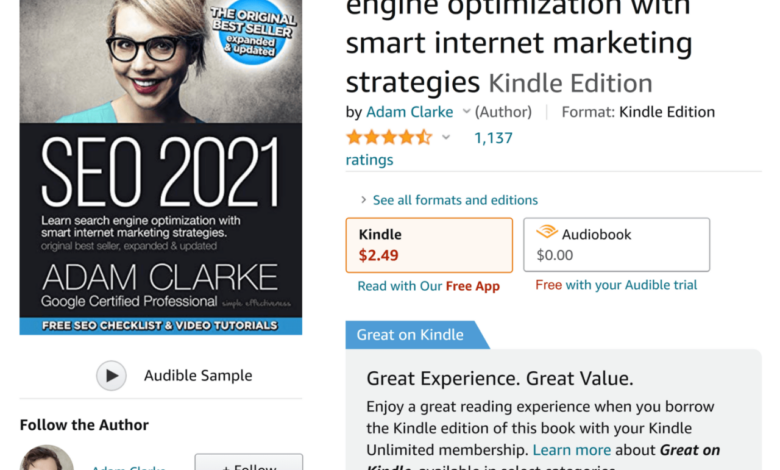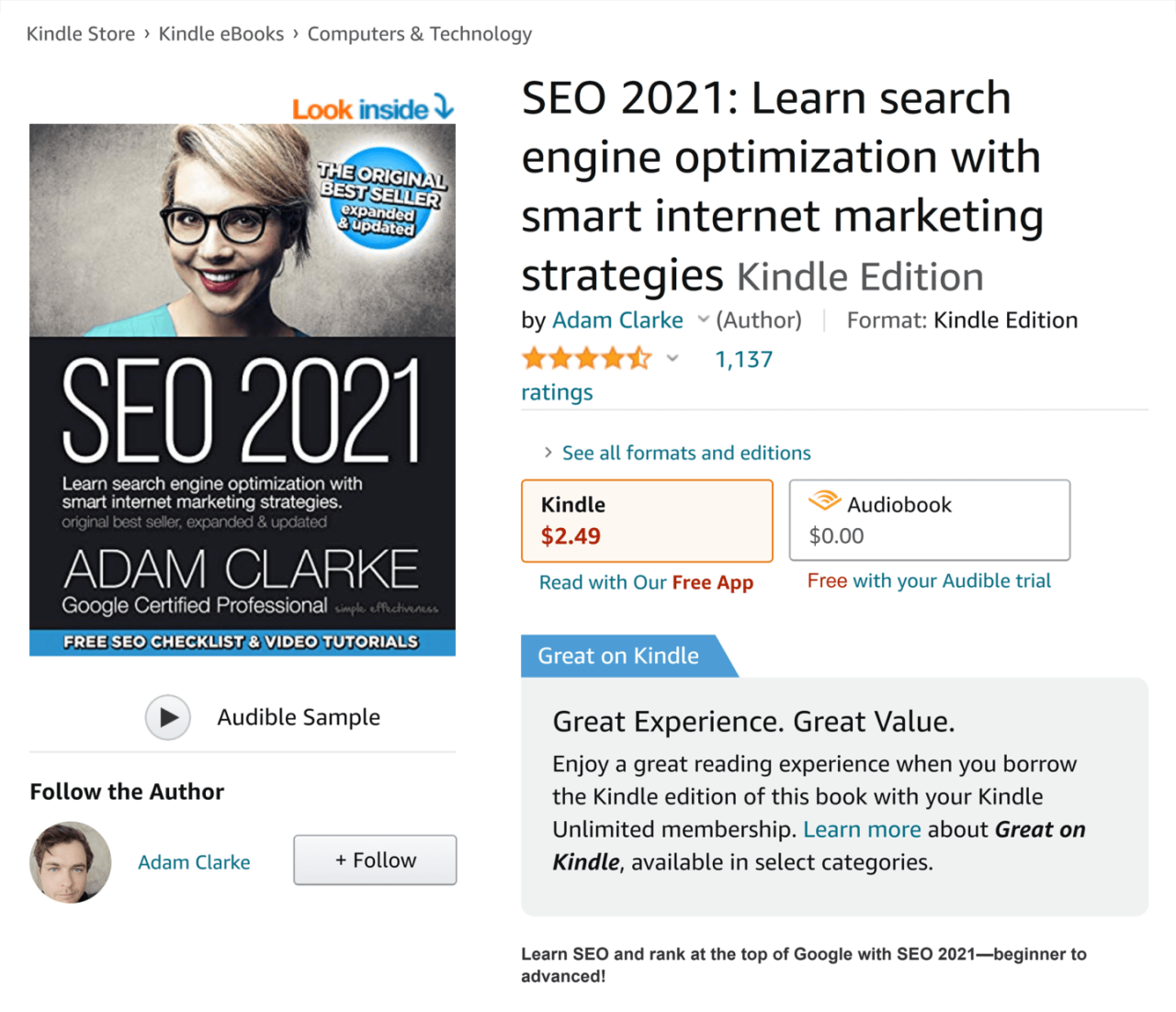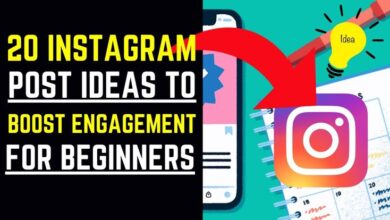
Ultimate Guide Copywriting Your Complete Blueprint
Ultimate guide copywriting dives deep into the art and science of crafting compelling copy. This comprehensive guide unpacks everything from the fundamentals of persuasive writing to advanced strategies for optimizing copy for conversions across various platforms.
We’ll explore the essential elements of effective copy, including understanding your target audience, crafting persuasive headlines and calls to action, and leveraging visual elements to enhance your message. Learn how to tailor your copy to different platforms like websites, social media, and email, and discover powerful tools and resources to boost your copywriting skills.
Introduction to Copywriting
Copywriting is the art and science of crafting persuasive text to achieve a specific marketing goal. It’s more than just writing; it’s about understanding your audience, their needs, and how to communicate a compelling message that motivates them to take action. From website landing pages to social media posts, copywriting plays a pivotal role in driving sales, building brand awareness, and fostering customer engagement.
A well-written copy is the key to converting prospects into paying customers.Effective copywriting hinges on several key factors. It requires a deep understanding of your target audience, their motivations, and their pain points. This understanding is crucial for crafting a message that resonates with them on a personal level and encourages them to take the desired action.
It also involves a mastery of persuasive language, storytelling techniques, and the art of crafting a compelling narrative that captivates readers and compels them to connect with the brand’s message.
Key Elements of Compelling Copy
Compelling copy is more than just words; it’s a carefully constructed blend of elements that work together to create a persuasive and engaging message. These elements include clear and concise language, a strong call to action, and a focus on benefits over features. Conveying value and building trust are paramount to persuading the audience to take action.
- Clarity and Conciseness: Clear and concise language is essential for effective communication. Avoid jargon or overly technical terms that might confuse or alienate the reader. Get straight to the point, and convey your message in a way that is easily understood.
- Strong Call to Action (CTA): A well-defined call to action (CTA) guides the reader toward the desired outcome. It should be clear, concise, and compelling, encouraging the reader to take the next step, whether it’s making a purchase, signing up for a newsletter, or visiting a website.
- Focus on Benefits, Not Features: Highlighting the benefits of a product or service is crucial for resonating with the target audience. Instead of simply listing features, focus on how those features solve a problem or improve the reader’s life.
- Building Trust and Credibility: Establish trust and credibility with the reader by being authentic, transparent, and providing evidence of expertise or experience. Testimonials and case studies can significantly enhance credibility.
Understanding Target Audience
Understanding your target audience is paramount to effective copywriting. Knowing their demographics, psychographics, pain points, and aspirations allows you to tailor your message to resonate with them on a personal level. This personalized approach increases the chances of conversion and fosters brand loyalty.
- Identifying Demographics: Demographics encompass characteristics like age, gender, location, income, and education level. Understanding these factors helps you tailor your message to specific groups.
- Unveiling Psychographics: Psychographics delve into the values, interests, attitudes, and lifestyle choices of your audience. Understanding these factors allows you to create a message that resonates with their beliefs and aspirations.
- Pinpointing Pain Points: Understanding the problems your target audience faces allows you to position your product or service as the solution. Highlight how your offering alleviates their pain points and improves their lives.
- Tailoring Messaging: Crafting a personalized message based on the target audience’s needs and desires increases the likelihood of engagement and conversion.
Types of Copywriting
Different marketing channels require different approaches to copywriting. The following table Artikels the key types of copywriting and their applications.
| Type of Copywriting | Description | Example |
|---|---|---|
| Website Copy | Content for website pages, including home pages, product descriptions, and landing pages. | Homepage descriptions, product detail pages, service descriptions |
| Social Media Copy | Content for social media platforms, focusing on brevity, engagement, and visual appeal. | Tweets, Facebook posts, Instagram captions, LinkedIn articles |
| Email Marketing Copy | Content for email campaigns, designed to build relationships, promote products, and drive conversions. | Newsletter content, promotional emails, abandoned cart emails |
| Print Copy | Content for print media like brochures, flyers, and magazines. | Brochure copy, flyer copy, magazine articles |
| Advertising Copy | Content for advertisements across various media, emphasizing persuasion and a strong call to action. | Television commercials, radio ads, online banner ads |
Fundamentals of Effective Copy: Ultimate Guide Copywriting

Crafting compelling copy isn’t just about stringing words together; it’s about understanding the psychology behind persuasion. Effective copywriting is a powerful tool for connecting with your audience, driving conversions, and building lasting brand loyalty. This section dives deep into the core principles of persuasive writing, highlighting the importance of clear language, storytelling, and strategic calls to action.Understanding your target audience is the bedrock of any successful copywriting strategy.
Persuasive copywriting requires a deep understanding of your audience’s needs, motivations, and pain points. Knowing who you’re writing for helps you tailor your message and create a stronger connection.
Core Principles of Persuasive Writing
Effective copywriting relies on several key principles to create compelling messages. These principles are essential for engaging your audience and driving desired actions. These include establishing credibility, building rapport, and addressing specific needs and concerns. Building trust and a genuine connection with your target audience is vital.
Crafting compelling copy is key in any marketing strategy, and an ultimate guide copywriting can help you nail it. Want to maximize your Instagram presence? Learning how to reformat your videos for Instagram TV, like in this helpful guide on 6 ways reformat videos instagram tv , is crucial for boosting engagement. Ultimately, mastering both video optimization and engaging copywriting will elevate your content and drive better results.
Clear and Concise Language
Clarity and conciseness are paramount in copywriting. Vague or overly complex language can confuse your audience and hinder their understanding of your message. Effective copy is precise and avoids jargon. Think about the language you use and how it will be perceived by your audience.Using simple, direct language makes your message easy to understand. This clarity increases the chances of your audience connecting with your message and taking action.
Storytelling in Copywriting
Storytelling is a powerful tool in copywriting, enabling you to connect with your audience on an emotional level. Stories create a narrative that resonates with your audience, making your brand more relatable and memorable. Stories humanize your brand, and your message.Weaving narratives into your copy helps to create a lasting impression and strengthens the emotional connection with your audience.
Personal stories can add credibility and relatability, fostering trust and understanding.
Effective Headlines and Calls to Action
Headlines are the first impression your audience gets. A captivating headline is essential for grabbing attention and driving readers to continue reading. A strong headline is like a powerful hook, immediately grabbing the reader’s attention and making them want to learn more. A call to action (CTA) encourages your audience to take a specific action, like making a purchase, signing up for a newsletter, or downloading a resource.Crafting compelling headlines and clear calls to action is crucial for maximizing conversion rates.
Headline Styles and Impact
| Headline Style | Example | Impact |
|---|---|---|
| Intriguing Question | “Tired of boring presentations?” | Captivates attention and encourages engagement. |
| Benefit-Driven | “Boost your productivity with our new software.” | Highlights the value proposition and benefits for the reader. |
| Problem/Solution | “Struggling with project deadlines? Our tools can help.” | Addresses a specific pain point and offers a solution. |
| Direct and Bold | “Get 20% off your first order.” | Clear, concise, and action-oriented. |
| Provocative Statement | “Reimagine your workflow.” | Sparks curiosity and inspires a change in perspective. |
Strategies for Crafting Compelling Copy
Crafting compelling copy is more than just writing words; it’s about understanding your audience and connecting with them on a deeper level. Effective copywriting uses various strategies to capture attention, build trust, and ultimately drive conversions. This section delves into the key strategies for creating copy that resonates with your target audience.Compelling copy goes beyond simply stating facts. It leverages emotional connections and a deep understanding of your audience’s desires and motivations.
By employing specific techniques, copywriters can create copy that not only informs but also persuades and inspires action.
Capturing Attention and Engaging Readers
Attention spans are shorter than ever before. To capture and maintain reader interest, copy needs to be concise, clear, and engaging from the first word. This often involves using strong headlines, compelling opening sentences, and a structured presentation of information.
Using Emotion and Benefits-Driven Approaches
Connecting with readers on an emotional level is crucial for creating a lasting impact. This involves understanding the emotions your target audience experiences in relation to your product or service. By focusing on the benefits rather than just the features, you tap into the desires and motivations that drive purchasing decisions. For example, instead of highlighting the technical specifications of a new phone, emphasize the convenience and freedom it offers in terms of communication and productivity.
Building Trust and Credibility
Trust is paramount in copywriting. Readers are more likely to engage with and act on copy that demonstrates expertise and reliability. This involves presenting your product or service with integrity, supporting claims with evidence, and building rapport with your audience through transparent communication. A strong call to action is also a crucial element to demonstrate trust.
Using Humor and Wit in Copywriting
Humor can be a powerful tool in copywriting, but it must be used carefully and appropriately. It should align with your brand voice and target audience, adding a lighthearted tone without being inappropriate or offensive. Use humor sparingly, focusing on a relevant anecdote or relatable experience that reinforces your message and brand identity.
Addressing Objections in Copy
Anticipating and addressing potential objections is a vital part of persuasive copywriting. Understanding the concerns of your target audience and preemptively offering solutions builds trust and strengthens your position as a knowledgeable and helpful resource. This allows you to proactively counter potential doubts and create a more reassuring customer experience. Acknowledging and addressing objections shows the audience that you understand their perspective and are committed to meeting their needs.
Presenting potential counterarguments, and then refuting them with data and personal experience, is one such approach.
Utilizing Visual Elements in Copy
Visuals are not just pretty pictures; they’re powerful tools that can dramatically enhance your copy’s impact. A well-chosen image, a captivating video, or even an infographic can significantly boost engagement, clarity, and memorability. They can communicate complex ideas quickly and connect with your audience on an emotional level, leading to a more effective and persuasive message. This section dives into the art of incorporating visuals seamlessly into your copywriting strategy.
The Role of Visuals in Copy
Visual elements, from images and videos to infographics and icons, play a crucial role in enhancing copy. They break up large blocks of text, making the content more digestible and visually appealing. Images can evoke emotions, tell stories, and illustrate concepts in a way that words alone cannot. Videos can showcase products, demonstrate processes, or build brand personality.
The strategic use of visuals can significantly increase audience engagement and retention. Visuals can help clarify complex information, making it easier for readers to understand and remember key takeaways. This visual appeal can also lead to a more positive perception of the brand.
Selecting Appropriate Visuals
Choosing visuals that align with your message is paramount. Understanding your target audience and the tone of your copy is crucial. A serious piece of copy about financial security likely needs images of trustworthy professionals, whereas a fun, playful campaign might use bright colors and lively cartoon characters. High-quality visuals that reflect your brand’s personality and values are essential.
Ensure that the chosen visuals are relevant to the content and that they reinforce the message being conveyed. For example, if you’re selling a hiking backpack, showcasing the product in a scenic landscape will better communicate its functionality and appeal.
Integrating Visuals Seamlessly
The integration of visuals shouldn’t feel forced or distracting. They should enhance, not overwhelm, the copy. Consider the size and placement of images. Use captions and alt text to describe the image and provide context for those who might not see it. High-quality images are crucial for conveying professionalism.
Ensure that the visuals are relevant to the text and enhance the message. Also, pay attention to color palettes and design elements to maintain consistency with your brand identity.
Best Practices for Visual Integration
- Relevance: Visuals should directly relate to the message of the copy. A product image is pointless in a blog post about marketing strategy. The visual should reinforce the points being made.
- Quality: High-resolution images and videos are essential for professionalism. Poor-quality visuals can detract from the overall impression and damage your brand’s credibility. Use professional, high-quality images and videos to ensure the visuals enhance the message.
- Context: Use captions and alt text to provide context for visually impaired readers. Good alt text clearly and concisely describes the image and its relevance to the surrounding text. This enhances accessibility and helps search engines understand the content of the image.
- Consistency: Maintain consistency in the style and design of your visuals across all your marketing materials. This creates a recognizable brand identity.
Visual Element Applications
| Visual Element | Application | Example |
|---|---|---|
| Photographs | Showcasing products, people, or places | A picture of a new smartphone model |
| Illustrations | Explaining complex concepts or ideas | A diagram of how a machine works |
| Infographics | Presenting data in a visually engaging format | A chart comparing sales figures across different regions |
| Videos | Demonstrating a process, building brand personality, or showcasing products | A short video showing how to assemble furniture |
| Icons | Adding visual cues, emphasizing key points, or improving readability | Icons used in a website navigation menu |
Copywriting for Specific Platforms
Crafting compelling copy isn’t a one-size-fits-all endeavor. The language, tone, and approach you use on Instagram will differ significantly from what you’d employ in an email newsletter or on a landing page. Understanding the nuances of each platform is crucial for maximizing impact and achieving your marketing goals.Effective copywriting for different platforms hinges on a deep understanding of the platform’s characteristics, the audience it attracts, and the specific goals you hope to achieve.
By adapting your approach, you can effectively communicate your message and drive engagement across various online channels.
Social Media Copywriting
Social media copy needs to be concise, engaging, and visually appealing. Short, punchy sentences and captivating visuals are key to capturing attention in the fast-paced social media environment. The goal is to encourage interaction, whether through likes, shares, comments, or direct messages. Humor, relatable anecdotes, and timely trends can significantly boost engagement. Consider using trending hashtags to increase visibility.
Email Copywriting
Email copywriting differs from social media in its focus on delivering a specific message. It requires a clear call to action and a concise presentation of information. Emails should be persuasive, while still maintaining a friendly and professional tone. Personalization is key to driving engagement. Segmenting your email list based on demographics and preferences allows you to tailor your message for maximum impact.
Website Copywriting
Website copywriting is about guiding the user through a journey. It’s not just about selling a product or service; it’s about educating, informing, and creating a positive brand experience. Use clear, concise language to explain your products or services and answer common questions. Focus on providing value to the reader by addressing their needs and concerns. Use strong calls to action and ensure easy navigation to achieve your objectives.
Platform-Specific Formats and Features
Each platform offers unique formats and features that can be leveraged to enhance your copy. Instagram Stories, for example, benefit from quick, engaging captions and visually appealing content. Email marketing tools allow you to segment your audience and personalize emails. Website platforms provide opportunities to incorporate interactive elements like quizzes and surveys to enhance user engagement.
Best Practices for Different Online Platforms
| Platform | Best Practices |
|---|---|
| Short, attention-grabbing captions; use relevant hashtags; incorporate visually appealing images and videos; encourage user engagement with questions and calls to action. | |
| Concise and impactful tweets; use relevant hashtags; engage with other users; include links to relevant content. | |
| Create engaging posts that encourage interaction; use high-quality images and videos; run targeted ads; build a strong community. | |
| Professional and informative posts; focus on industry news and insights; engage in discussions; network with other professionals. | |
| Personalize emails; use clear and concise language; include a strong call to action; segment your audience; test different subject lines and email content. | |
| Website | Use clear and concise language; provide value to the user; address common questions and concerns; include strong calls to action; ensure easy navigation. |
Optimizing Copy for Conversions

Conversion-focused copywriting is more than just writing compelling words; it’s about understanding your audience and crafting messages that drive action. This crucial stage involves meticulous analysis, targeted messaging, and continuous optimization. A well-optimized piece of copy not only attracts attention but also compels readers to take the desired step, whether it’s making a purchase, signing up for a newsletter, or requesting a consultation.Understanding your target audience is paramount to crafting effective conversion copy.
This involves digging deep into their needs, motivations, and pain points. What are they looking for? What problems are they trying to solve? By addressing these fundamental questions, you can tailor your copy to resonate deeply with your audience and position your offering as the ideal solution.
Identifying Key Customer Needs and Motivations
Understanding your target audience is crucial to crafting copy that resonates deeply. This involves analyzing their needs, motivations, and pain points to tailor your message to their specific situation. Qualitative research methods, like surveys and interviews, can provide invaluable insights into their desires and frustrations. Quantitative data, such as website analytics and social media engagement, can also illuminate patterns in their behavior and preferences.
This knowledge allows you to create copy that directly addresses their needs and positions your product or service as the ideal solution.
Importance of Strong Calls to Action (CTAs)
A strong call to action (CTA) is the crucial bridge between your message and the desired action. A well-crafted CTA compels the reader to take the next step, whether it’s clicking a button, filling out a form, or making a purchase. Effective CTAs are clear, concise, and use compelling language that aligns with the overall tone and style of your copy.
They must be prominent and easy to find on the page, using contrasting colors and bold fonts for maximum visibility. A well-placed and persuasive CTA is essential for achieving your desired conversions.
Strategies for A/B Testing and Analyzing Results, Ultimate guide copywriting
A/B testing is a powerful technique for optimizing your copy for conversions. By creating variations of your copy and testing them against each other, you can identify which versions perform better. This iterative approach allows for continuous improvement and ensures that your copy remains relevant and effective. Key metrics to track include click-through rates, conversion rates, and bounce rates.
Thorough analysis of these metrics provides insights into what resonates best with your target audience and allows for data-driven adjustments.
My ultimate guide to copywriting is about crafting compelling messages, but did you know that page speed plays a huge role in conversions? Understanding how fast your website loads is critical; slow loading times can significantly impact user experience, driving visitors away. For a deeper dive into how page speed directly affects conversion rates, check out this insightful article: how page speed affects conversion rate.
Ultimately, mastering both copywriting and website optimization is key to achieving your goals, and that’s what my guide aims to teach.
Examples of High-Converting Copywriting Techniques
Several techniques can significantly boost conversion rates. Using compelling language that evokes emotion, highlighting benefits over features, and creating a sense of urgency are effective strategies. Another key technique is personalization. By addressing the reader directly and tailoring the message to their specific needs, you can foster a stronger connection and increase engagement. Testimonials and social proof are also valuable tools for building trust and credibility.
Comparison of CTA Formats and Effectiveness
| CTA Format | Description | Effectiveness Considerations |
|---|---|---|
| Button CTA | Clear, visually prominent button with a concise action verb. | High visibility, easy to click, strong action signals. |
| Link CTA | Simple text link, often integrated into the copy. | Less visually striking, requires context, potentially less noticeable. |
| Image CTA | An image with text overlay or call-to-action. | Highly visual, can be effective if well-designed and complements the overall message. |
| Form CTA | Encourages user input via a form. | Effective for lead generation, requires clear form instructions, focus on the benefits of providing information. |
A well-structured table allows for quick comparison of various CTA formats, their visual elements, and the key aspects influencing their effectiveness. This comparison provides valuable insight into choosing the best CTA for your specific campaign.
Tools and Resources for Copywriters
Mastering copywriting isn’t just about creativity; it’s also about leveraging the right tools and resources. Staying informed about industry trends and competitor strategies is crucial for crafting effective copy. Understanding analytics and using the appropriate tools can significantly improve your copy’s performance. This section explores essential tools and resources that will help you hone your craft.
Researching Competitor Copy
Thorough competitor analysis is fundamental to crafting effective copy. Understanding what your competitors are doing, what works for them, and what doesn’t, allows you to differentiate your approach and create compelling copy that resonates with your target audience. Analyze their messaging, tone, and overall brand identity. Identify their strengths and weaknesses, and look for gaps in the market that your copy can fill.
By understanding their strategies, you can position your own copy in a more advantageous way.
Utilizing Analytics Tools
Analyzing copy performance is essential for continuous improvement. Employing analytics tools allows you to track key metrics like website traffic, click-through rates, conversion rates, and bounce rates. These metrics provide invaluable insights into how your copy is performing and identify areas where you can optimize your approach. For example, if your click-through rates are low on a specific call-to-action, you can refine the language or design to improve engagement.
Staying Updated with Industry Trends
The copywriting landscape is constantly evolving. Staying abreast of current trends, new technologies, and emerging best practices is crucial for success. This involves following industry blogs, attending webinars, and networking with other copywriters. Regularly review industry publications and reputable sources for new insights and perspectives. By staying current, you’ll be able to adapt your strategies and ensure your copy remains relevant and impactful.
Essential Tools and Resources
- Grammarly: A widely used grammar and style checker that helps you create error-free and polished copy. It offers suggestions for clarity, conciseness, and tone.
- Hemingway Editor: A tool focused on readability and clarity. It helps you identify areas where your writing can be more concise and engaging for your target audience.
- Google Analytics: A comprehensive analytics platform that provides detailed insights into website traffic, user behavior, and conversion rates. Crucial for understanding how your copy is performing on different platforms.
- SEMrush/Ahrefs: Tools for research and competitor analysis. These tools help identify relevant s and understand what strategies your competitors are using to rank highly.
- HubSpot/Mailchimp: Tools for email marketing. Effective email copy is crucial for building relationships and driving conversions. These platforms help you create and manage email campaigns.
- Copyblogger.com/Neil Patel’s Blog: Valuable resources for staying updated on copywriting trends and best practices. Following these blogs will provide you with insights and fresh ideas.
Case Studies of Effective Copywriting
Learning from successful copywriting campaigns is crucial for honing your skills and understanding what works. Analyzing effective strategies and the factors contributing to their success allows you to adapt and improve your own copy. This section explores real-world examples of compelling copy and the principles behind their effectiveness.Analyzing successful copywriting campaigns reveals valuable insights. By dissecting the strategies, visuals, and language used in winning campaigns, we can understand the elements that resonate with audiences and drive conversions.
These insights, coupled with a deep understanding of the target audience, provide the blueprint for crafting effective copy.
My ultimate guide to copywriting is all about crafting compelling messages, but a crucial part of that is understanding email capture tricks. Knowing how to effectively capture leads is key to any successful marketing campaign. Mastering those strategies, like the ones in this helpful guide on email capture tricks , will significantly boost your copy’s impact and ultimately, drive conversions.
So, get ready to level up your copywriting game with these essential tricks!
Examples of Successful Copywriting Campaigns
Successful copywriting campaigns often leverage a combination of strategies. Understanding these techniques can significantly improve your own copywriting efforts.
- The “Always” Campaign: This iconic campaign for Dove demonstrates how emotional connection and relatable narratives can resonate with a broad audience. By focusing on the positive aspects of womanhood and showcasing diverse individuals, the campaign fostered a strong emotional connection with viewers, creating a powerful brand identity. The simple yet impactful language used in their copy resonated with a wide demographic, creating a significant cultural impact.
The success stems from a combination of powerful visuals, relatable stories, and authentic messaging.
- Nike’s “Just Do It” Campaign: Nike’s “Just Do It” campaign exemplifies how simple, evocative language can motivate action. The tagline, concise and powerful, has resonated with consumers for decades, inspiring them to push their limits. The campaign’s effectiveness is built on associating the brand with ambition and self-improvement. The campaign consistently uses powerful imagery to amplify the message, showcasing athletes overcoming challenges and achieving their goals.
The success of this campaign lies in its ability to tap into universal aspirations and connect with a broad audience.
- Dollar Shave Club: This company’s initial viral marketing campaign showcased how humor and a unique value proposition can generate a significant following. Their unconventional approach, using humor and a relatable tone, captured the attention of a broad audience. The campaign’s success was due to its innovative and memorable presentation, effectively highlighting the unique value proposition and attracting potential customers.
Key Factors Contributing to Copy Effectiveness
Several key factors contribute to the success of copywriting campaigns. Identifying these elements is crucial for creating compelling and effective copy.
- Clear Value Proposition: Highlighting the unique benefits of a product or service for the target audience is essential. Successful copy clearly articulates what the audience will gain and how the offering solves their problems or addresses their needs.
- Strong Call to Action (CTA): A clear and compelling call to action guides the reader toward the desired outcome. This includes a specific and actionable directive, such as “Buy Now” or “Learn More.”
- Emotional Connection: Evoking emotions in the reader can create a stronger connection with the brand or product. Effective copy taps into the reader’s feelings and aspirations.
- Target Audience Understanding: Knowing the target audience’s needs, desires, and pain points is fundamental. Tailoring the copy to the specific audience ensures relevance and engagement.
Learning from Successful Examples
Analyzing successful copywriting campaigns provides valuable insights. This approach allows you to learn from others’ successes and apply these principles to your own work.
- Identify Patterns: Look for recurring themes, language styles, and visual elements in successful campaigns.
- Adapt Strategies: Adapt proven strategies to your specific needs and target audience. Don’t simply copy, but rather learn from the core principles.
- Continuously Evaluate: Monitor and evaluate the results of your own copywriting efforts. Analyze what works and what doesn’t, allowing for continuous improvement.
Summary of Case Studies and Key Takeaways
| Campaign | Key Takeaway |
|---|---|
| Always Campaign | Emotional connection, diverse representation, relatable narratives drive strong brand identity. |
| Nike’s “Just Do It” | Simple, evocative language and powerful imagery motivate action and tap into universal aspirations. |
| Dollar Shave Club | Humor, unique value proposition, and unconventional presentation generate significant viral engagement. |
Staying Current with Copywriting Trends
Staying ahead of the curve in copywriting is crucial for success in today’s rapidly evolving digital landscape. Understanding current trends, emerging technologies, and audience shifts allows copywriters to craft more effective and engaging content. This dynamic environment necessitates continuous learning and adaptation to maintain relevance and impact.
Recent Trends in Copywriting
Copywriting is constantly evolving, driven by shifts in consumer behavior and technological advancements. Recent trends highlight a move towards more personalized, conversational, and visually-driven content. This evolution demands that copywriters adapt their strategies to resonate with modern audiences.
- Emphasis on personalization: Targeting individual preferences and needs through tailored messaging is becoming increasingly important. This includes using data-driven insights to understand audience segments and creating content that speaks directly to their unique requirements.
- Rise of conversational copy: A conversational tone fosters trust and rapport with the audience. This involves adopting a more casual and approachable style, mimicking natural human interactions. Brands are employing this approach to build stronger connections with their customer base.
- Visual storytelling: Visually engaging content, such as high-quality images, videos, and infographics, is gaining prominence. This trend leverages the power of visuals to convey complex information effectively and captivate audiences.
- Focus on authenticity and transparency: Consumers are more discerning and value authenticity. Copy that reflects genuine values and builds trust through transparency is becoming more impactful. This is exemplified by the growth in influencer marketing and user-generated content.
Emerging Technologies and Their Impact
New technologies are reshaping the copywriting landscape, offering fresh opportunities and challenges. Understanding their influence is critical for copywriters to stay ahead of the curve.
- AI-powered tools: Artificial intelligence is automating certain copywriting tasks, such as generating basic content or analyzing data. This technology presents both opportunities for increased efficiency and challenges for maintaining a unique human touch.
- Voice search optimization: With the increasing popularity of voice assistants, optimizing content for voice search is becoming a necessity. Copywriters need to adapt their writing style to address questions and queries posed in conversational language.
- Augmented reality (AR) and virtual reality (VR): AR and VR offer exciting new avenues for immersive experiences. Copywriting can enhance these experiences by providing engaging narratives and detailed descriptions.
Importance of Staying Updated
Staying informed about industry news and best practices is crucial for effective copywriting. Constant learning ensures copywriters can adapt to changes in audience preferences and behaviors.
- Industry news: Following industry publications, blogs, and social media accounts can keep you informed about current trends, new technologies, and evolving audience behaviors.
- Best practices: Learning from successful copywriting campaigns, analyzing successful strategies, and keeping up-to-date with current best practices can elevate your work.
- Audience insights: Keeping track of changing audience preferences and behaviors through market research and analysis allows you to tailor your copywriting to resonate with their needs.
Adapting to Audience Preferences
Understanding audience needs and desires is paramount for crafting compelling copy. This involves a keen awareness of evolving consumer behaviors.
- Shifting consumer behaviors: Staying informed about changing consumer preferences, online habits, and shopping behaviors is crucial for crafting effective copy.
- Data-driven insights: Leveraging data analysis tools to understand audience segments, preferences, and pain points will inform more effective copywriting strategies.
- Personalization and customization: Creating personalized experiences and tailoring copy to specific audience segments enhances engagement and conversion rates.
Summary of Current Copywriting Trends
| Trend | Description | Impact |
|---|---|---|
| Emphasis on Personalization | Tailoring content to individual preferences. | Increased engagement, higher conversion rates. |
| Rise of Conversational Copy | Adopting a more natural, human-like tone. | Enhanced trust, stronger customer relationships. |
| Visual Storytelling | Leveraging visuals to enhance content impact. | Increased audience attention, improved understanding. |
| Focus on Authenticity | Building trust through transparency and genuineness. | Stronger brand loyalty, increased credibility. |
Closing Summary
This ultimate guide copywriting journey has explored the multifaceted world of compelling copy. From understanding the nuances of different platforms to mastering the art of conversion optimization, we’ve covered a wealth of knowledge. Armed with this comprehensive guide, you’re now equipped to craft powerful copy that resonates with your audience and drives meaningful results. Go forth and create captivating content!





